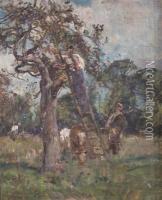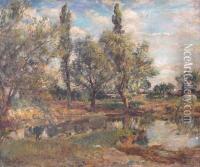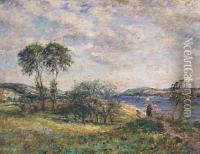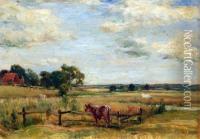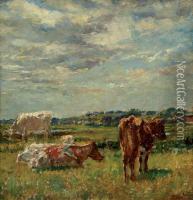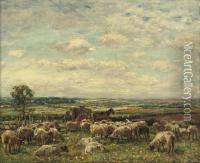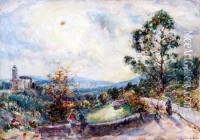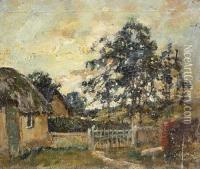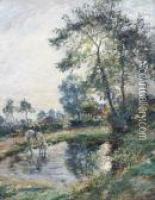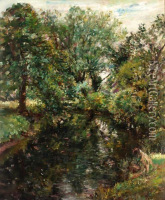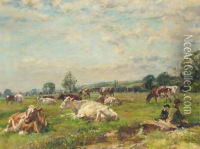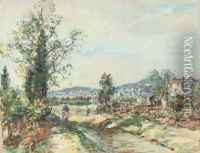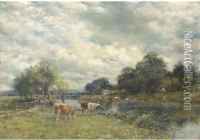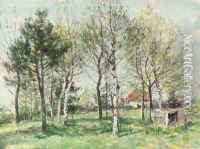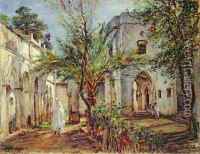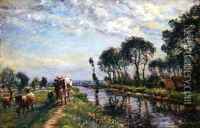William Mark Fisher Paintings
William Mark Fisher was a distinguished American painter known for his landscape works and contributions to the Impressionist movement. Born on November 28, 1841, in Boston, Massachusetts, Fisher displayed an early interest in art, which led him to pursue a career as a painter. He initially studied art under the guidance of landscape painter George Inness, who was one of the most influential American artists of his time.
Fisher continued his education in Paris, where he was greatly influenced by the French Impressionists. He studied at the École des Beaux-Arts and under the tutelage of renowned artists such as Jean-Léon Gérôme. During his time in Europe, Fisher traveled extensively, drawing inspiration from the varied landscapes and the vibrant art scene. His exposure to the Impressionist style is evident in his use of light and color, which became a hallmark of his paintings.
Upon returning to the United States, Fisher settled in New York and became an active member of the American art community. He was involved with several art organizations, including the National Academy of Design, where he was elected as an Associate member in 1906 and later as a full Academician in 1909. Fisher was also a member of the American Watercolor Society and the New York Etching Club, among others.
Throughout his career, Fisher exhibited his work widely and received considerable acclaim. His landscapes often depicted the serene beauty of the American countryside, and he was particularly known for his depictions of trees, which he rendered with a masterful understanding of light and atmosphere.
William Mark Fisher's contributions to American Impressionism and his dedication to his craft earned him a place among the prominent artists of his generation. His works continue to be appreciated for their beauty and artistic significance. Fisher passed away on February 6, 1923, leaving behind a legacy of art that continues to inspire and captivate audiences.

